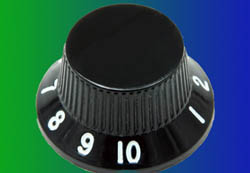Reader Corey asks a stupendous question:
“What would be a good way to even out dynamics in a quieter section, AND louder section, of a song without all sections of the song ending up the same volume? It seems like there should be an easier way than automating the compressors threshold on every track.”
First things first. Compression isn’t always the answer.
While I LOVE what compression can do for a track or a mix, I also know that it’s not a miracle worker, and there are other things to consider before you start making that compressor work overtime.
With that, here are four ways to balance out the loud and soft parts of a song (and yes, compression is a part of the equation):
1. Start With Instrumentation
Sometimes a song doesn’t work simply because the instrumentation is off.
Going from a whisper-quiet classical guitar to a heavy metal thrash-fest generally doesn’t work.
That’s not to say you shouldn’t work contrast and dynamic changes in to your songs (you definitely should), but if you make the changes TOO dramatic, you might have a hard time getting them to balance nicely in the mix.
So, for example, try adding in a piano and maybe some soft electric guitar swells to that classical guitar to get its energy level up…to prepare you for the thrashing that’s about to come.
2. The Volume Fader – The Unsung Hero
I say this a lot, but the better you get at setting levels in your mix, the less problems you’ll have.
There are SO many times that I’ve solved a mix issue simply by adjusting the faders and balancing the tracks a little better.
3. Don’t Forget About Automation
Compression is a great tool, but sometimes automating the volume of a track (or a mix) can give you better results.
In other words, simply turn up the quieter parts of the song to get them closer in volume to the louder parts.
4. Compress The Louder Parts
There’s this idea out there that the mix bus compressor needs to be working at all times, even on the quieter parts. Well hang on a second.
Set the compressor to do it’s thing on the louder sections, knocking off a few dB of gain reduction, but then leave the quieter parts alone (i.e. below the threshold).
By allowing the compressor to turn down the loud parts, you’re essentially turning UP the quieter parts.
But don’t ignore steps 1-3.
And when you get to compression, knowing HOW to set up that compressor is uber important.
I’ve gotcha covered. Check out Understanding Compression.
Joe Gilder is a Nashville-based engineer, musician, and producer who also provides training and advice at the Home Studio Corner.Note that Joe also offers highly effective training courses, including Understanding Compression and Understanding EQ.





















